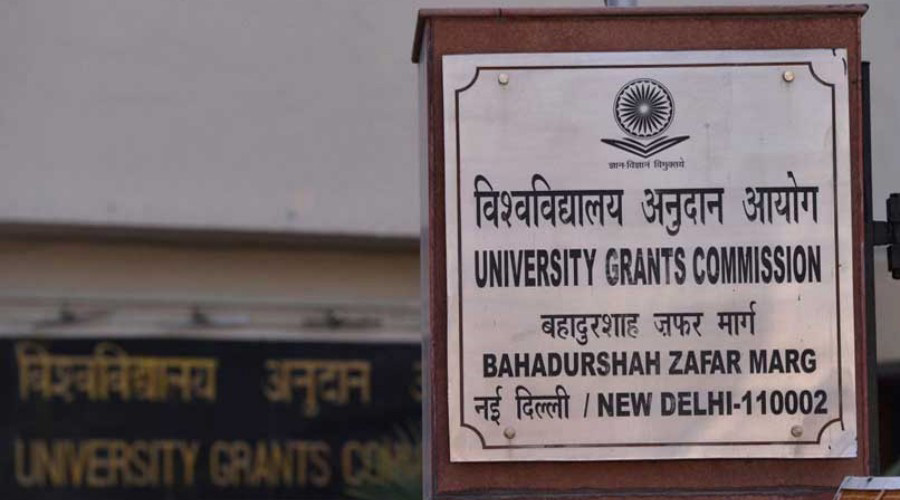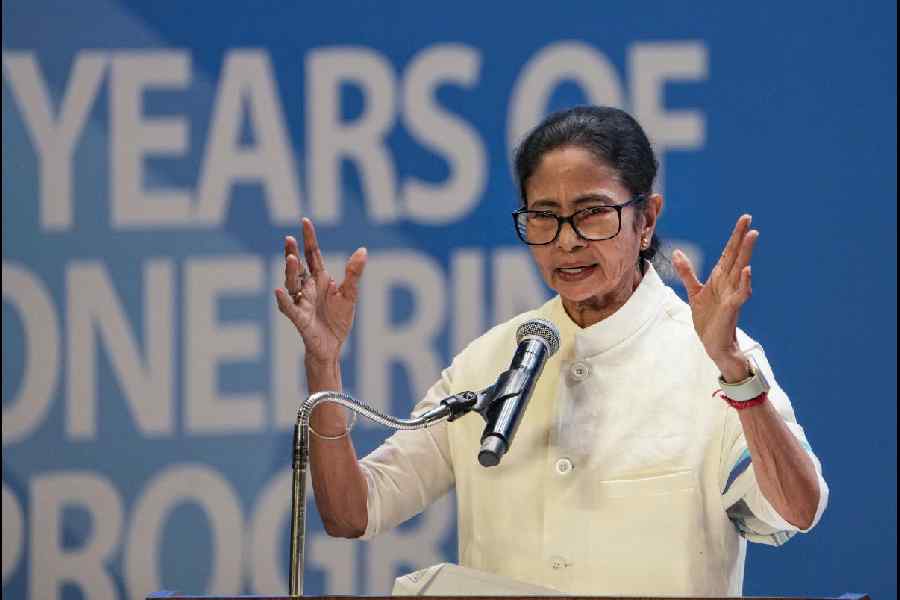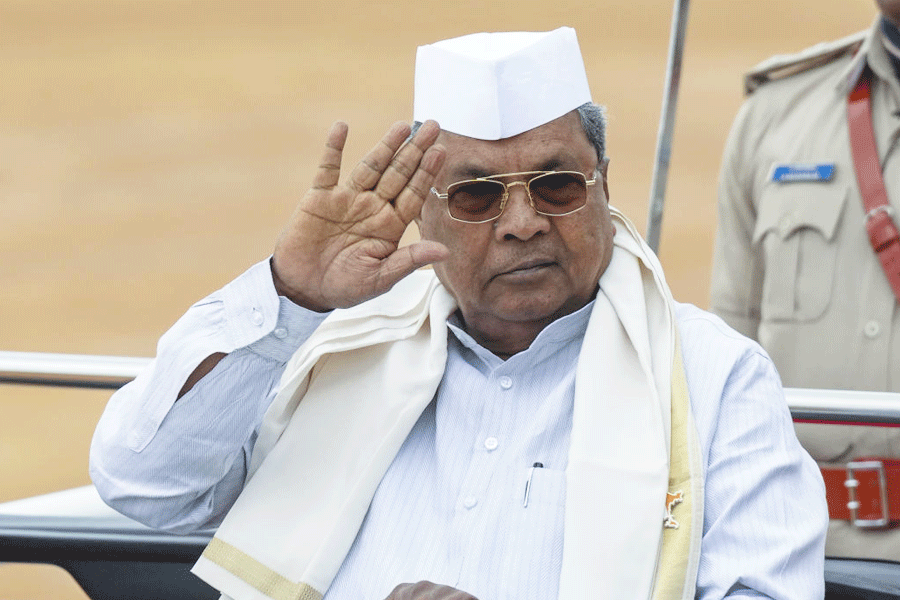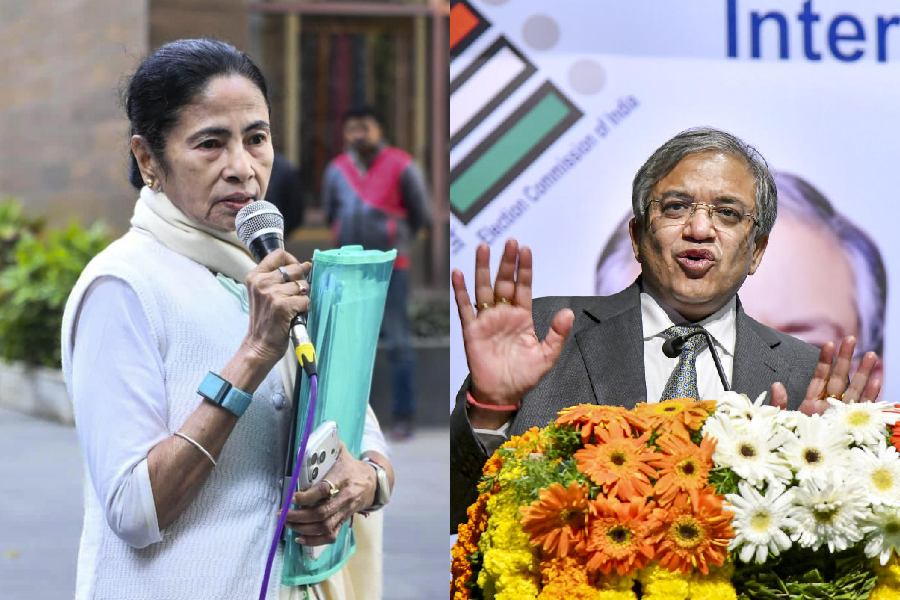If physics undergraduates studying electromagnetic waves take a break over the next few days to try and grasp how the gau mata radiates an “aura of mystical power”, none will be more pleased than the higher education regulator.
Medical students can do their bit by devoting themselves to analysing the therapeutic properties of the “panchgavya, a mixture of cow’s milk, curd, ghee, urine and dung”.
The University Grants Commission wants all university and college students to take an online test on the cow’s miraculous abilities, to be held by a government body on February 25. The exam is open to all citizens.
The UGC has written to the country’s 900 universities asking them to encourage their students and those of their affiliated 40,000 colleges to appear in the Kamdhenu Gau Vigyan Prachar Prasar Examination.
The examination will be conducted by the Rashtriya Kamdhenu Aayog (RKA), an organisation under the ministry of fisheries, animal husbandry and dairying.
All information on the exam is available on the RKA website, the UGC letter said.
The RKA website has uploaded study material for the test and said that successful candidates will receive certificates and the “meritorious” will be given awards.
Two science professors described the material as pseudoscience and questioned the UGC’s endorsement of the test. Some of the claims made in the study material:
Indian cows have the “special power to absorb the sun’s energy with the help of the ‘solar pulse’ (a blood vessel) situated on their humps running through the spine”.
“The Suryaketu Nadi, located in the cow’s back, absorbs many positive and medicinal energy (sic) from the sunlight and the atmosphere, leading to more nourishing milk, cow dung and urine.”
On a similar vein (no pun intended), Bengal BJP chief Dilip Ghosh had claimed a little over a year ago that the Indian cow’s milk is “slightly yellow” because it contains gold, produced by a blood vessel with the help of sunshine.
If anyone was wondering about the objective of producing “more nourishing... cow dung and urine”, the study material has an explanation.
It says the panchgavya, whose ingredients include cow urine and cow dung, is traditionally consumed during religious rites and is used as a medicine to cleanse body and mind as advised by Maharishi Charaka.
The cow stands for fertility, prosperity and life “in world traditions”, and is often called the mother-ancestor, perhaps because it was the first mammal domesticated by humans, claims the reference material.
According to britannica.com, the website of the Encylopedia Britannica, the dog was the first mammal domesticated by humans.
“She (the cow) has an aura of holiness and of mystical power,” the RKA material says.
“The cow is Aditi ‘the boundless’, the embodiment of a goddess who supports the universe.... It is, therefore, not surprising that the word aghanya — ‘not fit to be killed’ — is used 21 times for the cow in the Rigveda, the earliest scripture known to mankind.”
The material cites religions other than Hinduism too to campaign against cow slaughter. It quotes 11th-century Muslim theologian Al Ghazali as saying: “The meat of a cow is disease, its milk healthy, and its ghee, medicine.”
“Maharishi Swami Dayananda Saraswati, Madan Mohan Malaviya, Vinoba Bhave and others, who held the cow in great reverence, and professed non-killing, as in the Epistle to Romans (14.20): ‘For meat, destroy not the work of God’.”
Sunil Mukhi, chair of the committee of scientific values at the Indian Academy of Sciences and a professor at IISER Pune, said the study material was a mix of basic factual information (for instance, on cow breeds), opinions and unfounded claims glorifying the cow.
“The claim that the cow has an aura of holiness and mystical powers is unscientific. Nor is there any scientific basis to the claim about the cow’s hump absorbing the sun’s energy with the help of the ‘solar pulse’, or the one about the medicinal value of panchgavya,” Mukhi said.
He said the material seemed more religious than scientific, and criticised the UGC’s endorsement of the exam and its syllabus.
“According to academic ethics, the UGC should have provided evidence for these claims about cows, and explained what scientific methods and statistical analyses were used to arrive at these claims, which they have not done,” Mukhi said.
Aniket Sule, a professor at the Homi Bhabha Centre for Science Education, Tata Institute of Fundamental Research, Mumbai, said the objective behind the exam seemed to be to spread unscientific claims dressed as accepted knowledge.
“It seems they are trying to ensure that students and the public memorise these materials unquestioningly and pass them on to others,” Sule said.
“This is how the tradition of a minority section that believes in Sanskrit culture will be imposed on the whole nation.”
Sule too questioned the UGC’s endorsement of the test. “The UGC’s job is to maintain the standard of higher education in the country. The standard of higher education cannot be maintained by endorsing an examination whose syllabus carries pseudoscientific claims,” he said.
This newspaper sent emails to the RKA and UGC chairman D.P. Singh early on Thursday afternoon, seeking their comments on the concerns expressed about the test and the endorsement of pseudoscience. No responses had arrived till late night.











